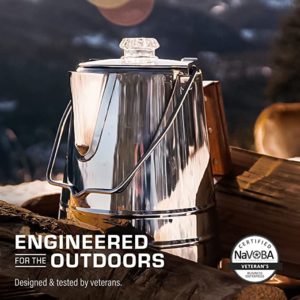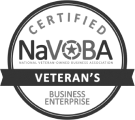The Coffee Snob’s Guide to the World of Coffee Makers
Home > Blog > Brewmaster Tips > Coffee Brewing Methods > The Coffee Snob’s Guide to the World of Coffee Makers
There’s no single coffee maker that can do it all. So choosing the best coffee maker is a matter of deciding what your priorities are. In this guide, you will learn about some of the key differences between different coffee makers, how to use a coffee maker, and what you need to know to make the right choice for you.
Drip Coffee Maker
Drip coffee machines have become the most standard brewing method. This is largely because of the convenience, and because most people don’t realize just how much flavor and pleasure is lost in the process.
This is not to say that your machine is awful and you should chuck it out the window. There are some really fantastic models out there. You can get a programmable coffee maker that automatically brews for you. You can also get a coffee maker with grinder already built in, saving on counter clutter and effort.
And drip coffee makers don’t all brew terrible coffee. Some can brew a pretty decent pot that will leave you with no complaints. And for those with busy schedules, the morning ritual involved in, say, pour over coffee or a French press can just be too time-consuming.
It requires no technique or talent. You simply insert ingredients and push the button (or series of buttons if there’s programming involved). Cleaning is relatively simple and just involves tossing out the old filter with the grounds and cleaning out the carafe.
So with that said, here is a breakdown of the biggest pros and cons to a drip coffee maker:
Pros
- Super easy. This is as easy as it gets when it comes to making coffee.
- Less time-consuming. The other methods don’t necessarily take longer to brew. It’s just that you have to be there throughout the process. With an automated machine, you press the button and walk away.
Cons
- Lower quality. No matter how great your machine is, it’s simply not going to give you the richness and fullness of flavor that other methods can deliver. As stated earlier, you will get a decent cup. But you won’t get an unbeatably wonderful cup.
- Not travel friendly: drip coffee makers are usually on the bulkier side so it’s not practical to pack them If you’re talking about camping, you’ll need to pack a generator just to power the thing.
- Not as long lasting: The fact that it is electronic means it already has a expiration date. Your non-mechanic and non-electronic coffee maker will last for lifetimes, but a machine is destined to eventually breakdown.
French Press Coffee Maker
A French press is an elegantly simple way to brew coffee. You can get smaller ones that are more portable or larger ones that can make a full pot. The basic technique involves grinding coffee, heating water, and adding them both to the chamber of the French Press.
Then, you press down the plunger to push the grounds to the bottom, allowing the brewed coffee to filter through the plunger. The force of pressure from pushing down on the plunger helps to more effectively extract the oils from the coffee.
The 1-2 minutes of time spent free floating through the hot water also allows for the oils in the ground beans to be pulled out and diffuse into the water much like tea diffuses when standing in hot water. This is what sets it apart.
While a drip machine sends water through the grounds and then drips out of the bottom, a French press allows the grounds to immerse in the water. This guarantees even soaking which prevents the uneven results of a drip machine where some grounds are over-diffused while others are left dry and untouched.
When using a French press, you need to keep a few things in mind to ensure a good end result:
- You should grind the coffee more coarsely. If it is too fine, it will dissolve too quickly with this method which will lead to a bitter cup of coffee.
- Your water should be a little hotter than with other methods. Ideally, 200 degrees.
- You should drink your coffee immediately after finished. It’s not really possible to stop the brewing process here so once it has steeped long enough, press the plunger and pour your cup to prevent the grounds from diffusing their bitters into your brew.
There are a lot of advantages to this but there are also some disadvantages worth considering before you buy:
Pros
- Delicious coffee. When done right, this method makes an undeniably beautiful cup of coffee.
- Lasts a lifetime. There are no mechanical or electronic parts to most models. This means it can last a lifetime. There is a possibility that the filter on the plunger begins to wear if not taken care of but otherwise, it is a solid item.
- A French press looks beautiful and adds a touch of refinement to your kitchen.
- Simple to learn. This takes less technique than the pour over method or cold brew and still gives you delicious coffee. Just make sure the temperature is right and the grounds are sufficiently coarse (think sea salt or raw sugar).
- Easy to clean. This is definitely one of the easiest coffee makers to clean. It’s simple cylindrical shape means there are no difficult angles or weird nooks and crannies to reach.
- Also great for tea. Loose leaf herbs and teas can be dropped in instead of coffee grounds to make tea. One piece takes care of your morning coffee and your evening tea!
Cons
- It is not slower in the sense that it takes longer to brew but it is time consuming in the sense that you have to be part of the full process. If your morning routine requires multi-tasking and fighting for every extra minute you can get, you might want to stick with an automated machine or, in summer, with a cold brew coffee maker that can be prepared in advance.
- Easy to get wrong: while it’s simple to learn, it’s also easy to get wrong. If you don’t use the right coarseness of grounds or the right temperature of water, it’s not going to taste great. Unfortunately, many people buy a French press without being aware of the special requirements involved. With this article, you already have a head start (although you’ll definitely want a more detailed guide specifically about the French press).
Pour Over Coffee Maker
This is a method that has been around for centuries but has recently become popular in the United States. It involves manually pouring hot water through coffee grounds which are in a filter either inside a dripper or placed inside a pour over coffee carafe.
This is the most deconstructed method there is. It is elegant, minimalist, and creates a beautiful, aromatic, and supremely rewarding cup of coffee in the end. It also gives you complete control over each step of the coffee.
Of all the methods described here, it definitely requires the most technique and care. But once you learn how to do it right, you’ll easily be able to do it right every time and it becomes a wonderful and enjoyable morning ritual.
Pros
- Best coffee. This is our favorite method for making coffee. The end result is the most delicious cup of coffee you’ll ever taste.
- Long lasting. The parts of a pour over coffee maker will stay with you for your whole life. You can even pass them down to your children to keep the tradition of wonderful coffee alive.
- Complete control: you get to determine each stage of the brewing and customize it to suit your tastes.
- With this coffee maker, you really start to see what goes into a cup of coffee. As you learn how to use it, you will learn which stages and which factors cause which results. This means you can experiment with things like changing the temperature, changing the grind size, or changing your pour technique to see how it affects the flavor.
Cons
- Time-consuming. It is definitely a more involved process. But as a coffee lover, you will probably come to appreciate the ritual of it all. Just wake up a few minutes earlier to make time for it.
- If you get all the specialized equipment, it can get pricey. If you stick with the basics, you can keep your costs down.
Cold Brew Coffee Maker
Cold brew is a method that uses cold water to make coffee. The process involved is similar to that of sun tea. You put coffee grounds in cold water and then let it set for a day or so until it has diffused.
This method beats iced coffee because there is no ice to water down your coffee and it doesn’t use stale, old coffee (most iced coffees you order at a café do). You get fresh, flavorful coffee that is cool enough to be enjoyed on a hot day.
A cold brew coffee maker is essentially a device that makes it easier to strain the brewed coffee from the grounds once it is done diffusing. You can get away with skipping the specialized device and just making cold brew coffee in, say, a French press.
But a specialized machine does make it easier and keeps your French press free for fresh, hot cups of coffee while you wait for your cold brew.
Single Cup Coffee Maker
There are a variety of ways to brew a single cup of coffee. You can get a drip coffee maker that does single cups. This is an easy way to do it, but such machines are usually expensive and also require the repeated purchase of pricey coffee capsules.
Another alternative is to get a pour over dripper that you can simply rest on top of your cup. This is much cheaper and gives you the high quality of a pour over cup of coffee. Plus, these small coffee makers are easy to carry with you so they make great travel companions.
With this break down, you now have a solid understanding of what all these different coffee makers have to offer. In the end, you may not want to just get one kind. Different types are suited for different situations.
For example, having a drip machine on standby is great when you are pressed for time and just need to get your fix. The pour over device is the perfect every day maker to give you an enjoyable morning routine. It’s also great for iced coffee. The cold brew coffee maker is ideal for summer (and less ideal in winter when you crave that steamy, warm cup).
As you become more and more involved in the world of coffee, you will likely find yourself developing a nice collection of different coffee makers to suit each of the occasions which call for coffee.
Join COLETTI Loyalty Program for Rewards and Discounts





